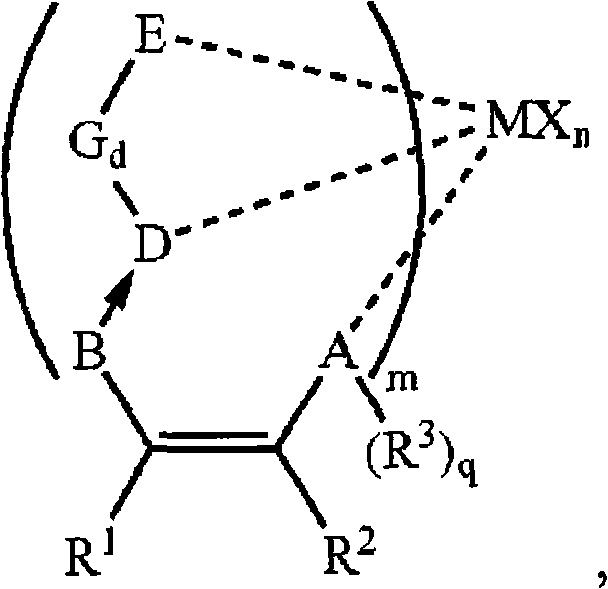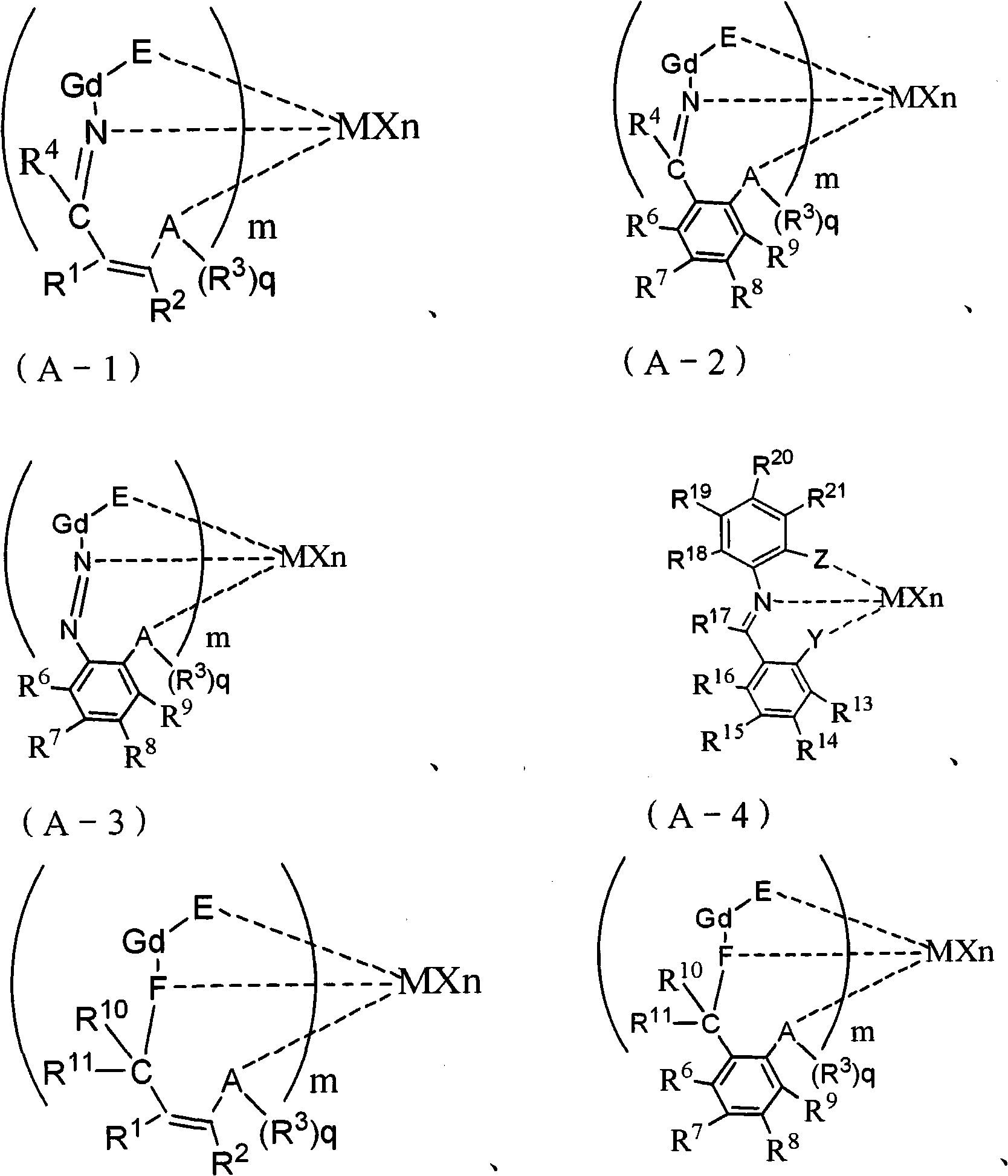Supported non-metallocene catalyst, preparation method and application
A non-metallocene, supported technology, applied in the field of non-metallocene catalysts, can solve the problems of complex preparation process, destruction, complex loading process, etc., and achieve the effect of simple preparation method
- Summary
- Abstract
- Description
- Claims
- Application Information
AI Technical Summary
Problems solved by technology
Method used
Image
Examples
preparation example Construction
[0102]The invention relates to a preparation method of a supported non-metallocene catalyst, comprising the following steps: dissolving a magnesium compound in a first solvent to obtain a magnesium compound solution; making a porous carrier optionally subjected to thermal activation treatment and the magnesium contacting the compound solution to obtain a first mixed slurry; adding a precipitant to the first mixed slurry to obtain a composite carrier, contacting the non-metallocene complex with the composite carrier in the presence of a second solvent, a step of obtaining a second mixed slurry; and a step of directly drying the second mixed slurry to obtain the supported non-metallocene catalyst.
[0103] The magnesium compound will be specifically described below.
[0104] According to the present invention, the term "magnesium compound" refers to an organic or inorganic solid anhydrous magnesium-containing compound conventionally used as a carrier of a supported olefin polyme...
Embodiment 1
[0292] The magnesium compound is anhydrous magnesium chloride, the first solvent is tetrahydrofuran, and the porous carrier is silicon dioxide, that is, silica gel, the model is ES757 of Ineos Company, and the silica gel is thermally activated by continuously roasting at 600°C for 4 hours under nitrogen atmosphere before use. The precipitating agent adopts hexane, and the non-metallocene complex adopts the structure The compound, the second solvent adopts dichloromethane.
[0293] Weigh 5g of anhydrous magnesium chloride, add the first solvent and dissolve it completely at room temperature to obtain a magnesium compound solution, then add heat-activated silica gel, and stir at room temperature for 2 hours to form the first mixed slurry. Add the precipitant dropwise to the first mixed slurry, stir and react at 60°C for 4 hours to make it completely precipitate, filter, wash the precipitant twice, each time the amount of precipitant is 60ml, evenly heat to 60°C and vacuum dry ...
Embodiment 1-1
[0298] Basically the same as Example 1, but with the following changes:
[0299] The porous carrier was changed to Grace's 955, and it was continuously calcined at 400° C. for 8 hours under a nitrogen atmosphere to be thermally activated.
[0300] The first solvent is changed to toluene, the precipitant is changed to cyclohexane, and the non-metallocene complex adopts The second solvent was changed to toluene.
[0301] Wherein the ratio is as follows: the ratio of the magnesium compound to the first solvent is 1mol:150ml; the molar ratio of the magnesium compound to the non-metallocene complex is 1:0.15; the mass ratio of the magnesium compound to the porous carrier is 1:4; the precipitating agent and the second A solvent volume ratio of 1:2.
[0302] Supported non-metallocene catalysts are designated CAT-1-1.
PUM
 Login to View More
Login to View More Abstract
Description
Claims
Application Information
 Login to View More
Login to View More - Generate Ideas
- Intellectual Property
- Life Sciences
- Materials
- Tech Scout
- Unparalleled Data Quality
- Higher Quality Content
- 60% Fewer Hallucinations
Browse by: Latest US Patents, China's latest patents, Technical Efficacy Thesaurus, Application Domain, Technology Topic, Popular Technical Reports.
© 2025 PatSnap. All rights reserved.Legal|Privacy policy|Modern Slavery Act Transparency Statement|Sitemap|About US| Contact US: help@patsnap.com



